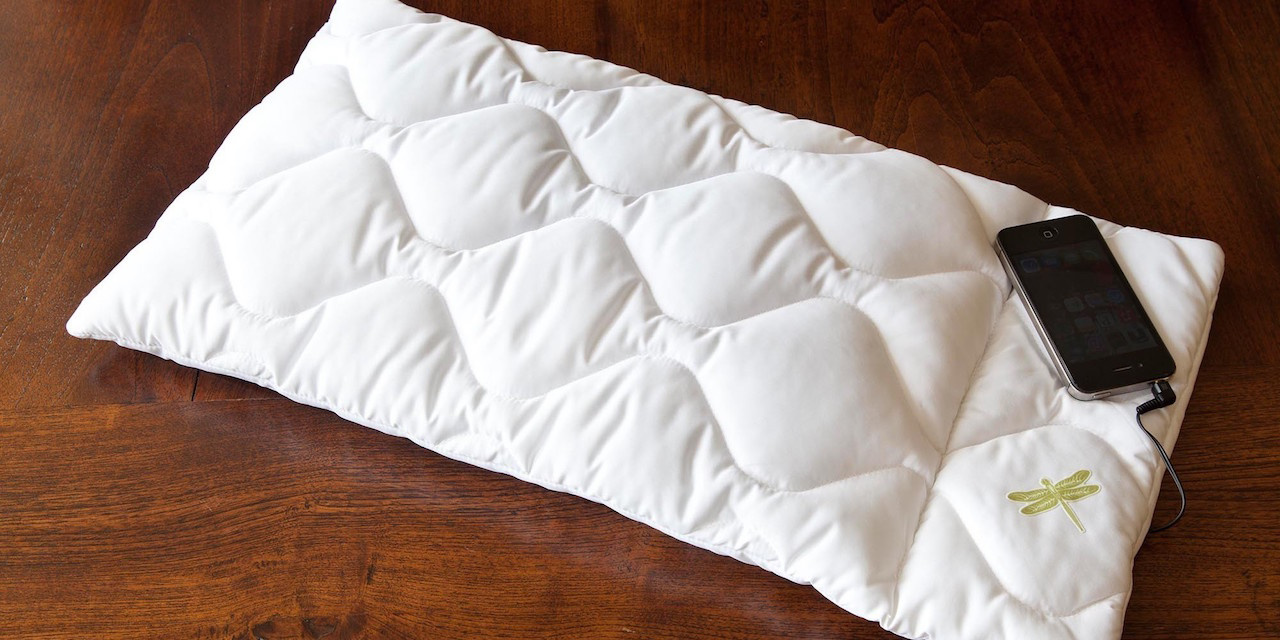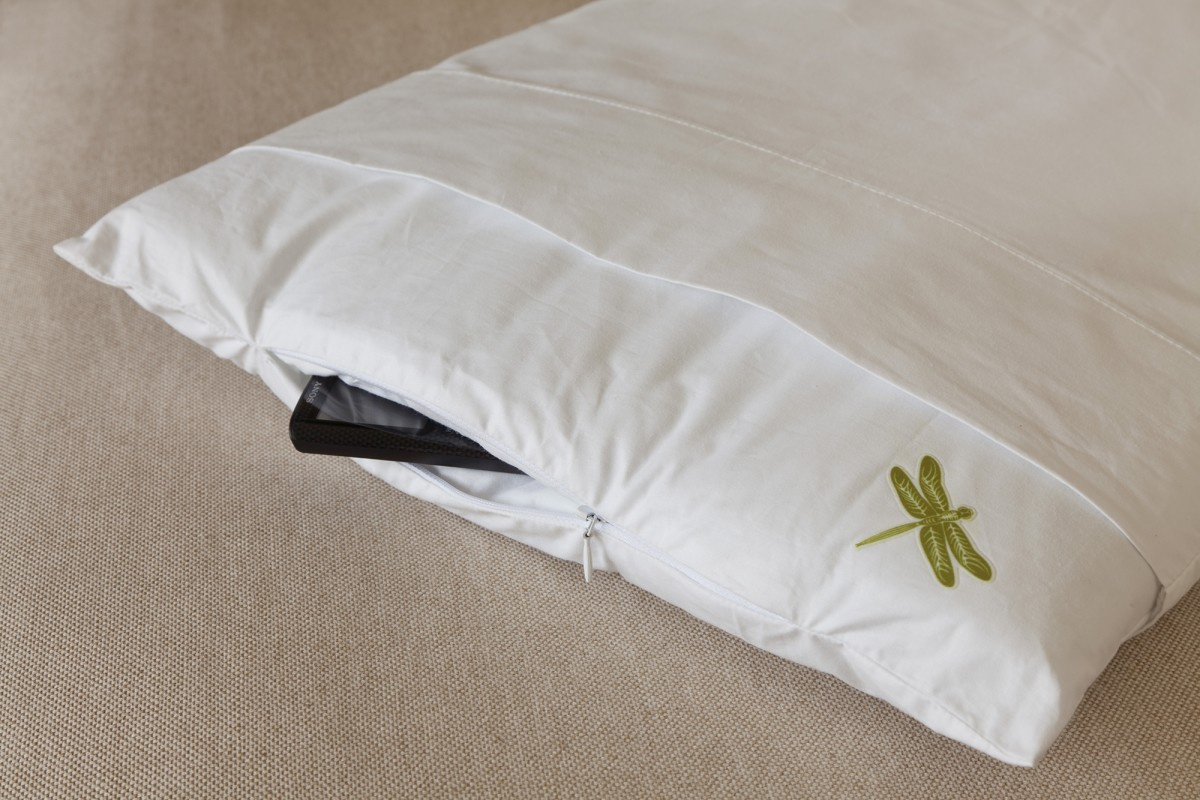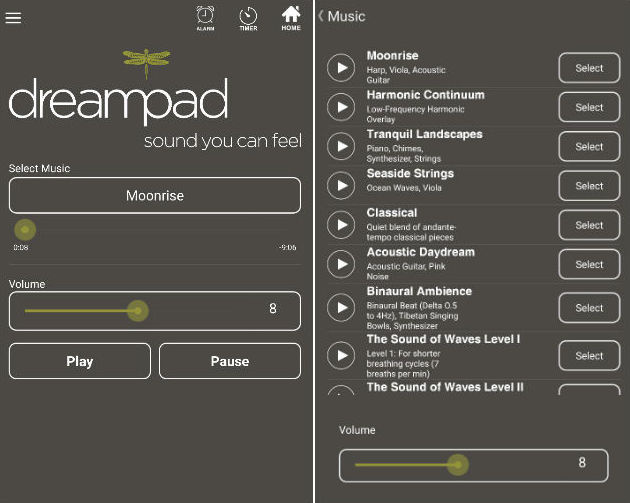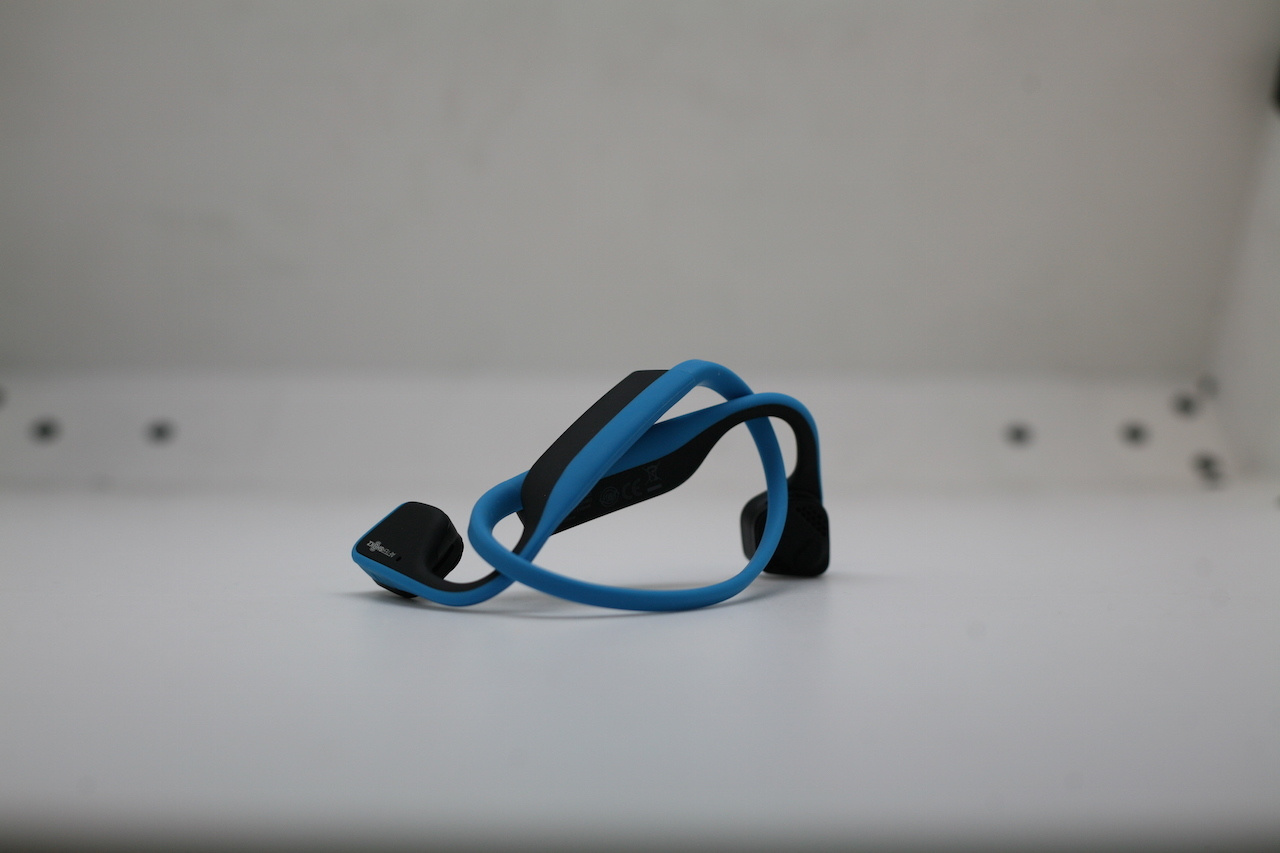A pillow with bone conduction sound will help you sleep better.
We continue to acquaint you with the original applications of bone conduction technology, and today a gadget that affects several exciting issues at once is a pillow.

Not so long ago, we have already said that bone conduction is becoming something like kitsch and, apart from the obvious headsets, it is becoming more and more difficult for her to look for a use. In any case, the latest news with IFA in places are puzzling.
The pillow, while it seems equally unusual, promises to help you get better sleep, or in other words to solve a rather important problem with sleep and insomnia with the help of musical accompaniment. Falling asleep to music or other noises is not a new idea, and for this, individual gadgets, including headphones , have been created for a long time.

At the same time, the very idea of falling asleep in headphones, albeit soft, albeit comfortable, albeit wireless, etc., does not seem to all practical and safe. Given that the competitive advantage of bone conduction is precisely the ability to leave your ears open, then the creators of the pillow saw the potential here.
Drampad
Surprisingly, it was found that with sufficient coverage in the international press, this pillow is still unknown to us. Business publications (Forbes), and geek portals (ZDnet), and dozens of specialized and non-profile subject magazines are writing about it, which is kindly collected on a separate page on the official website.
Developers treat their product responsibly, trying to back up the theses with references to studies. The main thing is that vibrations, by means of which sounds reach the inner ear, stimulate the vagus nerve, setting the entire body for relaxation.
Low-frequency music, according to the authors of the project, transmitted in this way, reduces the stress during systematic exposure, which is confirmed by the ordered and conducted experiments, which are also highlighted in a separate paragraph .
Despite not always a large sample, it is necessary to note some constancy of the experiments: they have been going on since 2012, and on different user groups, including some chronic abnormalities: post-traumatic syndrome, autistic disorders and some others.
The company behaves quite self-confidently! For example, in the Faq section you can read that if the pillow doesn’t fit the user for a month, in other words it doesn’t bring any improvements, you can return it as a result of the trial period. In other words - like no one loses.
The system works in pair with the application, where a certain amount of calm music is collected. In management, it is not at all difficult:

The basis is a rather simple idea: it is comfortable to fall asleep to low-frequency melodies, but the secret, it turns out, is precisely in the bone conduction of sound and subtle vibrations that are unattainable with air conduction of sound.
How to sell Dreampad
By and large, the DreamPad is a trick: to assemble a kit , you need to buy a pillow.

Bluetooth receiver and download the app to your smartphone or buy a Sony player for $ 75.

In other words, there are no sensors and speakers in the pillow.
Does it work?
In this sense, it is not very clear what is the advantage of this method and the same Trekz under the pillow (this is what we tested first of all when we learned about the DreamPad).
It works. Given that the design of Trekz Titanium is strong enough and flexible, so as not to worry about it, you can safely throw it under a pillow at night and turn on the music from your smartphone.

Feelings are interesting. First of all (if you want to repeat), you should still take some single position, rather than turn your head, otherwise the sound will be just like “uneven”. Also, for a better effect, you can use some kind of earplugs, for example, if you are talking about an audio book, where it is important to listen to words, not music.
Headset sound is enough for accurate transmission, but at maximum volume, as you know, headphones will distribute it outside, which can prevent others from sleeping if you are not sleeping alone: the DreamPad developers say that they have solved this problem, but it’s not clear how.
However, a similar method, if it does not solve for someone the main task - comfortable falling asleep, then something may be useful simply for those who like to fall asleep to the sound of a book or some kind of light music: the lack of headphones on their heads during sleep or receiver on the bedside table - also some no, but an achievement.
The DreamPad project has been known since 2012, and it came out in a separate site some time later. First, studies were conducted in the framework of the project ILS (Integrated Listen Sistem) - multisensor programs to improve brain function.

Not so long ago, we have already said that bone conduction is becoming something like kitsch and, apart from the obvious headsets, it is becoming more and more difficult for her to look for a use. In any case, the latest news with IFA in places are puzzling.
The pillow, while it seems equally unusual, promises to help you get better sleep, or in other words to solve a rather important problem with sleep and insomnia with the help of musical accompaniment. Falling asleep to music or other noises is not a new idea, and for this, individual gadgets, including headphones , have been created for a long time.

At the same time, the very idea of falling asleep in headphones, albeit soft, albeit comfortable, albeit wireless, etc., does not seem to all practical and safe. Given that the competitive advantage of bone conduction is precisely the ability to leave your ears open, then the creators of the pillow saw the potential here.
Drampad
Surprisingly, it was found that with sufficient coverage in the international press, this pillow is still unknown to us. Business publications (Forbes), and geek portals (ZDnet), and dozens of specialized and non-profile subject magazines are writing about it, which is kindly collected on a separate page on the official website.
Developers treat their product responsibly, trying to back up the theses with references to studies. The main thing is that vibrations, by means of which sounds reach the inner ear, stimulate the vagus nerve, setting the entire body for relaxation.
Low-frequency music, according to the authors of the project, transmitted in this way, reduces the stress during systematic exposure, which is confirmed by the ordered and conducted experiments, which are also highlighted in a separate paragraph .
Despite not always a large sample, it is necessary to note some constancy of the experiments: they have been going on since 2012, and on different user groups, including some chronic abnormalities: post-traumatic syndrome, autistic disorders and some others.
The company behaves quite self-confidently! For example, in the Faq section you can read that if the pillow doesn’t fit the user for a month, in other words it doesn’t bring any improvements, you can return it as a result of the trial period. In other words - like no one loses.
The system works in pair with the application, where a certain amount of calm music is collected. In management, it is not at all difficult:

The basis is a rather simple idea: it is comfortable to fall asleep to low-frequency melodies, but the secret, it turns out, is precisely in the bone conduction of sound and subtle vibrations that are unattainable with air conduction of sound.
How to sell Dreampad
By and large, the DreamPad is a trick: to assemble a kit , you need to buy a pillow.

Bluetooth receiver and download the app to your smartphone or buy a Sony player for $ 75.

In other words, there are no sensors and speakers in the pillow.
Does it work?
In this sense, it is not very clear what is the advantage of this method and the same Trekz under the pillow (this is what we tested first of all when we learned about the DreamPad).
It works. Given that the design of Trekz Titanium is strong enough and flexible, so as not to worry about it, you can safely throw it under a pillow at night and turn on the music from your smartphone.
Feelings are interesting. First of all (if you want to repeat), you should still take some single position, rather than turn your head, otherwise the sound will be just like “uneven”. Also, for a better effect, you can use some kind of earplugs, for example, if you are talking about an audio book, where it is important to listen to words, not music.
Headset sound is enough for accurate transmission, but at maximum volume, as you know, headphones will distribute it outside, which can prevent others from sleeping if you are not sleeping alone: the DreamPad developers say that they have solved this problem, but it’s not clear how.
However, a similar method, if it does not solve for someone the main task - comfortable falling asleep, then something may be useful simply for those who like to fall asleep to the sound of a book or some kind of light music: the lack of headphones on their heads during sleep or receiver on the bedside table - also some no, but an achievement.
The DreamPad project has been known since 2012, and it came out in a separate site some time later. First, studies were conducted in the framework of the project ILS (Integrated Listen Sistem) - multisensor programs to improve brain function.
All Articles